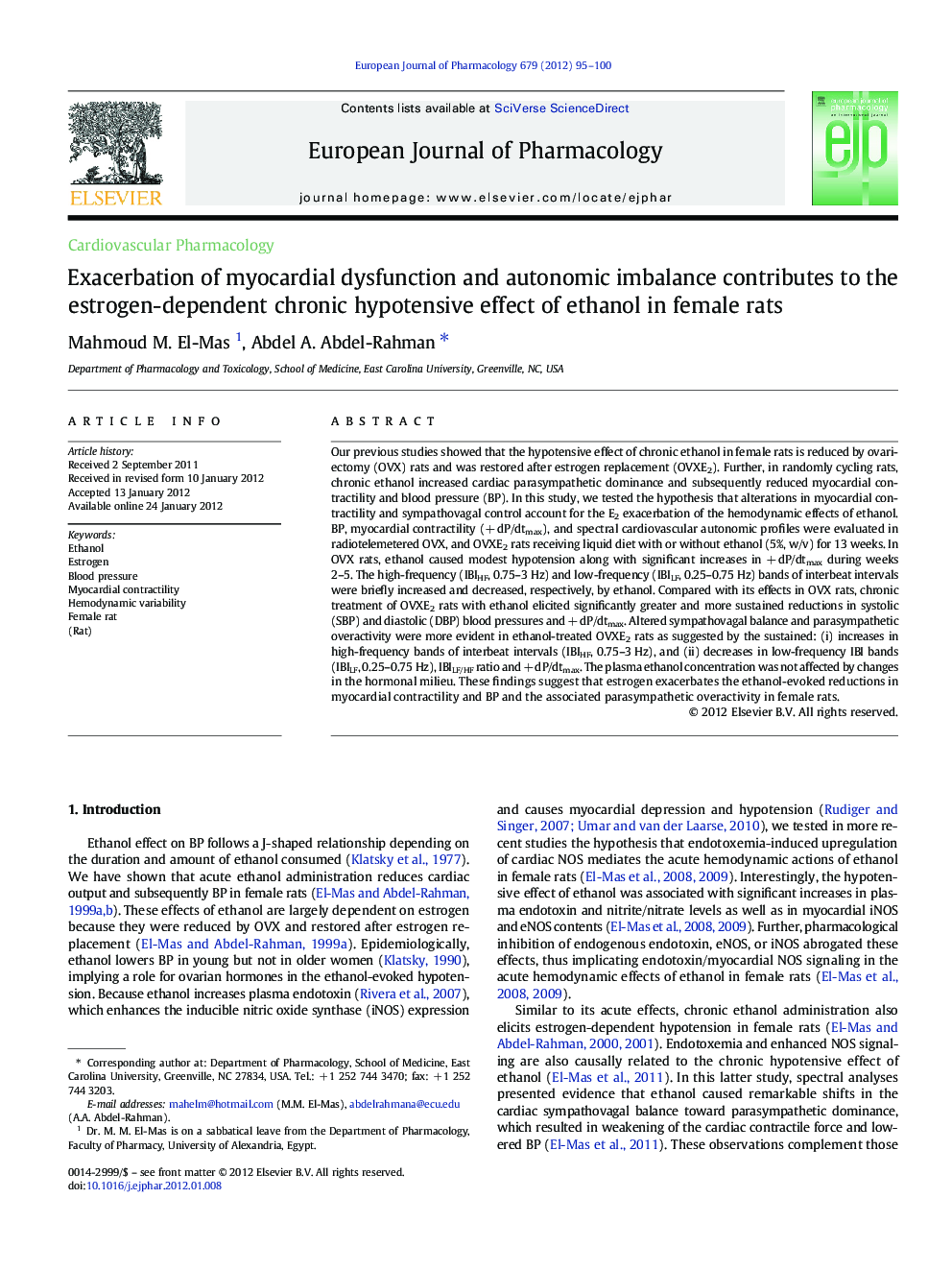| Article ID | Journal | Published Year | Pages | File Type |
|---|---|---|---|---|
| 5829765 | European Journal of Pharmacology | 2012 | 6 Pages |
Abstract
Our previous studies showed that the hypotensive effect of chronic ethanol in female rats is reduced by ovariectomy (OVX) rats and was restored after estrogen replacement (OVXE2). Further, in randomly cycling rats, chronic ethanol increased cardiac parasympathetic dominance and subsequently reduced myocardial contractility and blood pressure (BP). In this study, we tested the hypothesis that alterations in myocardial contractility and sympathovagal control account for the E2 exacerbation of the hemodynamic effects of ethanol. BP, myocardial contractility (+Â dP/dtmax), and spectral cardiovascular autonomic profiles were evaluated in radiotelemetered OVX, and OVXE2 rats receiving liquid diet with or without ethanol (5%, w/v) for 13Â weeks. In OVX rats, ethanol caused modest hypotension along with significant increases in +Â dP/dtmax during weeks 2-5. The high-frequency (IBIHF, 0.75-3Â Hz) and low-frequency (IBILF, 0.25-0.75Â Hz) bands of interbeat intervals were briefly increased and decreased, respectively, by ethanol. Compared with its effects in OVX rats, chronic treatment of OVXE2 rats with ethanol elicited significantly greater and more sustained reductions in systolic (SBP) and diastolic (DBP) blood pressures and +Â dP/dtmax. Altered sympathovagal balance and parasympathetic overactivity were more evident in ethanol-treated OVXE2 rats as suggested by the sustained: (i) increases in high-frequency bands of interbeat intervals (IBIHF, 0.75-3Â Hz), and (ii) decreases in low-frequency IBI bands (IBILF, 0.25-0.75Â Hz), IBILF/HF ratio and +Â dP/dtmax. The plasma ethanol concentration was not affected by changes in the hormonal milieu. These findings suggest that estrogen exacerbates the ethanol-evoked reductions in myocardial contractility and BP and the associated parasympathetic overactivity in female rats.
Keywords
Related Topics
Life Sciences
Neuroscience
Cellular and Molecular Neuroscience
Authors
Mahmoud M. El-Mas, Abdel A. Abdel-Rahman,
